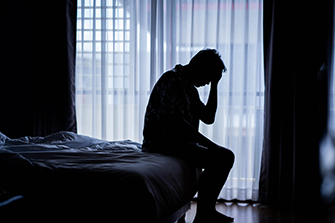Sleep Apnea: The Basics
Are you worried that you may be suffering from sleep apnea—or that your partner is? Is the snoring getting intolerable and out of control? Feeling uncharacteristically sluggish throughout the day? There is a chance you may be suffering from sleep apnea. Keep reading to learn about the basics of sleep apnea, including what it is, the tell-tale symptoms, and sleep apnea treatment.
What is Sleep Apnea?
According to the National Heart, Lung, and Blood Institute, sleep apnea is a common condition in which your breathing stops and restarts many times while you sleep. This can prevent your body from getting enough oxygen. You may want to talk to your healthcare provider about sleep apnea if someone tells you that you snore or gasp during sleep or if you experience other symptoms of poor-quality sleep, such as excessive daytime sleepiness.
There are two types of sleep apnea.
- Obstructive sleep apnea happens when your upper airway becomes blocked many times while you sleep, reducing or completely stopping airflow. This is the most common type of sleep apnea. Anything that could narrow your airways, such as obesity, large tonsils, or changes in your hormone levels, can increase your risk for obstructive sleep apnea.
- Central sleep apnea happens when your brain does not send the signals needed to breathe. Health conditions that affect how your brain controls your airway and chest muscles can cause central sleep apnea.
What Are the Symptoms of Sleep Apnea?
- Feeling tired upon waking up
- Daytime sleepiness
- Snoring
- Mood changes
- Waking up throughout the night
- Unusual breathing patterns and pauses in breathing while asleep
- Insomnia
- Weight gain
- Sexual dysfunction
- Migraines
- Dry mouth
- Sore throat
What is Sleep Apnea Treatment?
The most common way to treat sleep apnea is by wearing a CPAP machine. This provides pressure through the airways, opening them up and allowing the user to breathe more easily and properly. However, CPAP machines are a band-aid and do not treat the cause of sleep apnea.
Proper sleep apnea treatment can often be found through an oral appliance. Oral appliances fit like a sports mouthguard or an orthodontic retainer. The appliances support your jaw in a forward position to maintain an open upper airway. Many patients consider oral appliances to be more comfortable than a PAP mask. They are also silent, portable, and easy to care for and an overall better option versus a CPAP machine.
About Dr. Krissy Connor, Advanced Sleep and TMJ Solutions
Dr. Krissy Connor received her BSN in 2001 at the Marquette University School of Nursing. She was an emergency room nurse at Aurora Sinai Medical Center for 3 years before attending the Marquette University School of Dentistry to receive her DDS degree in 2008. She completed a post-graduate residency in Advanced Education in General Dentistry at the Zablocki VA Medical Center in Milwaukee, WI. Her background as a nurse motivated her to seek an area of dentistry where she could use her wide variety of skills and clinical experience to better serve her community. She has been collaborating with physicians to treat patients with Obstructive Sleep Apnea using oral appliance therapy since 2014.
Beyond her accomplishments, Dr. Connor is a mother to three beautiful daughters. Her husband, Dr. Michael Connor, is a Neurologist who shares in her passion for healthcare.
Dr. Connor has been improving the lives of patients as the owner of Hypnos Inc. in Brookfield, WI. She is a diplomate of the American Board of Dental Sleep Medicine and the American Sleep and Breathing Academy.
For more information on sleep apnea treatment, visit advancedsleepandtmjsolutions.com!








